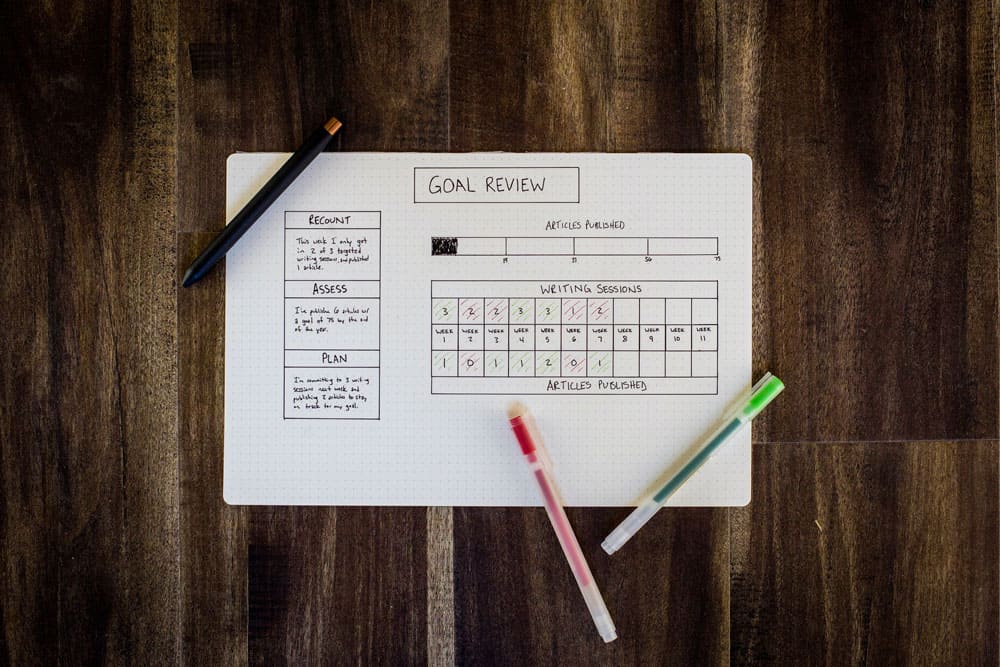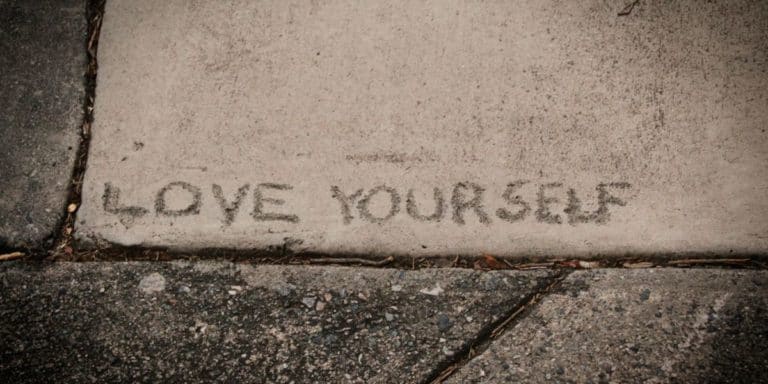Is There A Difference Between Goals vs. Resolutions?

The start of a new year has many people thinking about resolutions. Usually by February, those resolutions are a thing of the past. Have you wondered why we can’t maintain resolutions? Have you thought about setting goals instead of resolutions?
Wait, is there a difference between setting goals vs. resolutions?
Yes! Let’s first chat about the definition of each then we will dive into the differences and how to set each one to be successful in obtaining our goals and resolutions.
What is the definition of goals vs. resolutions?
A goal is a specific, measurable target that you want to achieve. Resolutions are more general statements about what you would like to change or improve in your life.
The differences between goals vs. resolutions
- Resolution is a firm decision to do or not to do something, while goal is the end toward which effort is directed.
- Resolutions are something that you aim for, while goals are more specific and often about how you want to finish.
- An intention is something that you mean to do or be, while a resolution is a firm decision to do or not to do something.
- Goals are future-focused and specific, while resolutions are vague and often big.
- If there is a specific target or end to a resolution, that’s usually a sign it’s actually a goal.
Why set goals vs. resolutions?
- Setting goals are better than making resolutions because they are more specific, and thus have a higher chance of being achieved.
- A majority of people who set resolutions fail, but this is largely due to a lack of commitment rather than a lack of specificity.
- The biggest problem with resolutions is that they often become self-defeating, losing focus on what’s really important.
- If you want to be successful at setting goals or making resolutions, it’s important to make sure you have the right mindset.
- Goals are something we declare with a timeline attached, while resolutions are something we don’t give much thought to until the new year is upon us.
- Resolutions are something we declare, but they have no end date, which is why it is so hard to make them stick; there is nothing to hold us accountable.
- Goals are attached to specific achievements, while resolutions are a declaration of a permanent change.
- A resolution is a passive behavior, a statement without action– “I’m going to increase my social media presence this year.” That is a resolution.
- Goals need action in order to be achieved, while resolutions need action only in order for them to become goals .
- When done right, goal setting provides you with a list of actionable items you need to fulfill your resolutions.
- A goal is more specific like, “I’m going to increase my social media following by 1,000 followers by June 1 and this is how I’m going to do it.”
- Resolutions cannot be achieved without goals and goals cannot be created without resolutions
What are some common mistakes people make when setting resolutions vs. goals?
- Many people make the mistake of setting resolutions that are too vague, which leads to 70% of people failing to achieve them.
- Vague goals almost always lead to failure because people lack the commitment needed to succeed.
- Specific goals are more likely to be achieved, but it’s important to remember that not everyone is going to be on board with your plan.
- When making a goal or resolution, it is important to be clear and concise so that you have the best chance of success.
- Goals should be specific, measurable, achievable, relevant, and time-bound.
- Resolutions are often vague, unenforceable, irrelevant, or too long-term.
What are some tips for setting goals vs. resolutions?
Set an approach-oriented resolution
When you set resolutions, you need to have a clear idea of what it is you want to change. This can be more easily achieved by setting a positive goal, rather than making a “firm” resolution. Having a goal in mind allows for more flexibility and creativity when it comes to solving the problem.
Approach-oriented resolutions are resolutions that focus on adding a new habit or changing an existing one. To set an approach-oriented resolution, you need to decide what habit you want to add or change. If you want to quit something, re-frame the goal as wanting to add something good instead. A goal is attainable and more manageable than a resolution. Set a goal that is part of a “journey” and enjoy the road to reaching it.
Focus on the small steps as goals
When it comes to setting and achieving resolutions, it’s important to focus on small steps. This will help you stay motivated and focused. Once you have achieved your goal, you can then focus more on the bigger picture and the final steps to achieving it. Breaking a bad habit can take a lot of persistence and patience, but it’s worth it in the end. To start breaking the bad habits that hold you back, make small changes to your daily routine.
Get clear on the WHY
It’s important to know why you want to achieve a certain goal or resolution. Without a concrete motivation, it will be difficult to stay committed to your goal. Try to tie your goal to a specific and attainable outcome. Additionally, having multiple goals can help you achieve your resolution more quickly.
The three concepts of “why,” “intentions,” and “goals” can help you understand your motivations and align your actions with your values. Make sure you have a clear vision of what you want and how you want to get there. Review and adjust your plans as needed, but always keep your goals and resolution in mind.
Measure your progress
It is important to be specific, measurable, and achievable when setting a goal in order to be effective. Checking for feasibility and setting a time-bound deadline are also keys to success. A granular plan helps with effective and efficient execution while logging progress and setting weekly targets provides motivation to stay on track. Finally, seeing milestones and progress allows for making up any missed goals and still working toward the ultimate resolution.
Keep going
It’s important to set new goals and resolutions regularly, and to keep growing. Pursuing goals can be difficult, but it’s important not to give up when faced with a setback or when you feel that you have failed. Know what it will take to reach your goal and be prepared to invest the necessary resources. When pursuing a goal, don’t be afraid to turn obstacles into opportunities. Pursue your goals relentlessly, and you’ll soon find yourself in a better place.
Remember that obstacles are opportunities in disguise. By viewing them as such, you can stay motivated and continue working towards your goals. Ultimately, the goal is to turn these obstacles into stepping stones that lead you closer to success.
Celebrate your success
It’s important to celebrate your successes, both big and small. One way to do this is by setting smaller goals and working towards them from a can-do mindset to achieve your resolution. Renewing yourself periodically is also key.
Design a strategy around small, sustainable changes
1. Change is often resisted, but by focusing on one small change it can be easier to overcome this resistance.
2. It takes 66 days to break a new habit. Start with a manageable goal and increase from there to work towards your resolution. The hardest part is simply starting!
3. Repetition is key to success when trying to change a habit – begin by doing something new each month in order to make your smaller goals more achievable.
4. Make sure your goals are close to impossible but still challenging in the beginning so you don’t get discouraged – start off slow and ease into changing your habits in order to achieve results faster.
Pair your resolution with a simple but comprehensive goal plan
Creating a simple but comprehensive goal plan to achieve your resolution is important for staying focused and motivated. When setting your goals, be specific and measure it so you know when you’re successful. Make sure your goal is achievable and reasonable, and set a deadline to help keep you on track. Establish milestones along the way to track your progress and ensure you stay focused on your goals leading to your resolution.
Create a contingency plan that helps you stay on track
A contingency plan is a plan that is put in place in case something goes wrong. It helps you bounce back quickly from setbacks and ensures that your goal is achievable. A contingency plan helps set goals and milestones for a goal, while avoiding the weaknesses of intentions, goals, and plans. An example of a contingency plan is setting goals to meditate for ten minutes five days a week for the next twenty days. Setting goals and creating contingency plans helps to stay motivated and on track. Open-ended goals allow for progress to be tracked and kept track of, which provides motivation. Bullet Journaling can be used to track progress and stay motivated towards goal attainment.
Set a goal-oriented resolution
It is important to set a goal-oriented resolution in order to be successful. A goal-oriented resolution should be doable and meaningful. To make sure your resolution is relevant to your interests and abilities, focus on setting measurable goals. Make sure your goals are realistic and achievable, but also challenging in order to see progress. Try setting smaller, more manageable goals first which will eventually form into a larger habit. Remember that resolutions are ineffective without a goal, so setting measurable goals is essential for tracking progress and reaching your resolution.

How can I set goals vs. resolutions for the new year?
It’s important to set goals and resolutions resolutions that are challenging but achievable. You should also consider why you’re setting the goal, what steps you’ll take to achieve it, and whether or not it’s something you really want to achieve.
A goal is a statement of what you want to achieve, with the steps you need to take to achieve it, and when you want to achieve it. Goals should be based on a clear rationale, and should be achievable by a specific team with the necessary resources. A goal is more likely to be achieved when it is reframed as a goal rather than a resolution. The key to setting effective goals is to ask yourself why the goal is important and who needs to be involved. Set goals and communicate them to your team in order celebrate wins together!
What are some resources for setting goals vs. resolutions?
There are many resources available for those looking to set resolutions and goals. Goals are better than resolutions because they tend to be more successful, with a failure rate of only about 20%.
Additionally, goals are more specific than resolutions and easier to track and achieve. To create effective goals, resolution planning requires specific, measurable goals. Many people find it helpful to write their goals down and celebrate their successes along the way.
Whether you’re looking to set some new goals or resolutions for the new year, it’s important to remember the difference between the two. Goals are specific and measurable, while resolutions are more general and vague. Keep this in mind when setting your goals and resolutions, and you’ll be more likely to stick to them! The hardest part of achieving something is the start. Once you start, you are on your way!
Don’t forget to subscribe to my newsletters to receive updates on new content and to stay connected. Also, subscribe to my you-tube channel for more information!





